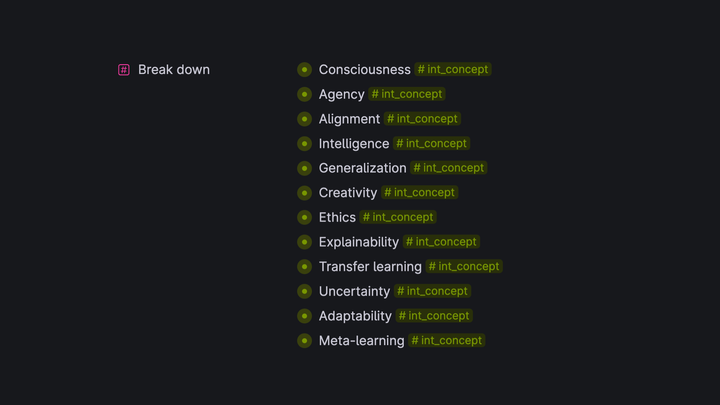Hey 👋 — Andrew is here.
Today's issue of Tools For Thought is about tools that designed to boost your reading.
It will take about 4 minutes to read. Hope you enjoy it!
250 words per minute (wpm).
That's how fast the average person reads!
It's 10 hours to read a book.
1000 hours to read 100 books.
Quite slow, right?
Invented 5400 years ago (along with writing), reading pretty much didn't change since then.
Nowadays, people spend a lot of time reading:
books, articles, blogs, tweets, manuals, emails, contracts, how-tos, wikis, reports, you name it!
Reading is still the most efficient way to absorb information.
We would gain a lot if we upgrade it a bit.
That's about time to challenge 5400 years old tech.
I will introduce tools to boost your reading.
They will help you to
- Read fast
- Read smart
- Read focused
- Boost comprehension
- Learn from what you are reading
Each of these tools works best in one of 3 reading modes.
3 modes of reading
From the meta-book "How to Read a Book" by Mortimer Adler.
- Inspectional reading
- Analytical reading
- Synoptical reading
All three can be adjusted for better efficiency.
Inspectional reading
Brief skimming, forming the impression, extracting key ideas.
Key question: how can I maximize value while also minimizing my investment of time?
Here are tools for that:
Social reading plugin.
Key idea: Glasp curators become your filters.
Let's say you want to read a long article.
It would take you 15-20 minutes.

Before doing that → skim highlights from people you trust.
That will give you the essence of the article.
It may also provide enough information on whether you should read the whole article or not.
The social reading trend is here to stay, and it's just getting started.
Similar logic applies here.
You can find professional summaries for books, scan key ideas, form your expectations and prioritize the book.
Analytical reading
Thorough reading, reading for comprehension.
Key question: how can I read this fast with the maximum comprehension and with minimal information losses?
First things first: you need focus.
Use Endel to set up generative background music.
Put it in focus mode.
It will make your brain do a "noise cancelation."
Demanding filtering job makes the cognitive task harder and you will get more focus as a result.
This method revises texts so that the most concise parts of words are highlighted. This guides the eye over the text and the brain remembers previously learned words more quickly.

Bionic reading aims to play a supporting role in the absorption of volume text.
There's an ongoing debate on whether Bionic is efficient.
I measured my own results and saw a substantial difference.
Guys from Readwise did an experiment with 2000 readers and found no significant impact on reading speed.
However, before accepting these findings, I would want to see them peer-reviewed and replicated.
Synoptical reading
Getting a wider sense of the topic. Using several sources. Identifying and filling knowledge gaps.
Key question: how can I achieve an understanding of the broader subject?
The essential tool here is GPT-3 & Fermat.
I've built in Fermat my Reading Co-pilot: a three-stage GPT-3 experimental playground.
To demonstrate how it works I will break down Dan Shipper's article about productivity (first part of it).
Stage 1. Make a summary.
The summary allows me to get a grip of the main idea of the text.
It gives a big picture; It sets up expectations.

Stage 2. Extract knowledge
Now, when I get a general idea, I go further.
GPT-3 allows to parse key subjects and objects from the text; extract relationships between them.
Here is the example of Romeo and Juliet
Here are my results with Shipper's text (after some structuring)

It's quite impressive, right? The key ideas are outlined.
I use another tool from Fermat toolkit to convert this structure to note and export it to Roam Research.
Stage 3. Explore and expand knowledge
I prompt GPT-3 to expand on some key topics I've discovered on the knowledge extraction phase.

It's not too bad. I can stop at this stage, considering I have a reasonable grip on the topic.
Obviously, it is an experiment. The text is short and easy.
But the same setup works with bigger and more complex texts.
GPT-3 is not an ideal tool for the job. However, better tools are on the way.
TL;DR
For inspectional reading
Use tools that maximize value while also minimizing investment of time:
Glasp, Shortform
For analytical reading
Use tools that boost focus and comprehension:
Endel, Bionic reading
For synoptical reading
Use tools that help to form knowledge of the broader subject:
GPT-3, Fermat
See you again next week🛰


